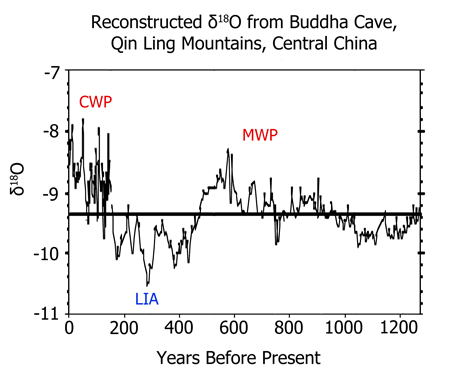Buddha Cave, Qin Ling Mountains, Central China
Reference
Paulsen, D.E., Li, H.-C. and Ku, T.-L. 2003. Climate variability in central China over the last 1270 years revealed by high-resolution stalagmite records. Quaternary Science Reviews 22: 691-701.
Reference
Paulsen, D.E., Li, H.-C. and Ku, T.-L. 2003. Climate variability in central China over the last 1270 years revealed by high-resolution stalagmite records. Quaternary Science Reviews 22: 691-701.
Description
The authors used high-resolution records of δ13C and δ18O in stalagmite SF-1 from Buddha Cave (33°40'N, 109°05'E) to infer changes in climate in central China for the last 1270 years in terms of "warmer, colder, wetter and drier conditions," and among the climatic episodes evident in those data were, in the words of the three researchers, "those corresponding to the Medieval Warm Period, Little Ice Age and 20th-century warming, lending support to the global extent of these events." The MWP was further identified by them as having occurred over the period AD 965-1475, and according to the data presented in their Figure 6, the peak warmth of the MWP is below that of the Current Warm Period.





